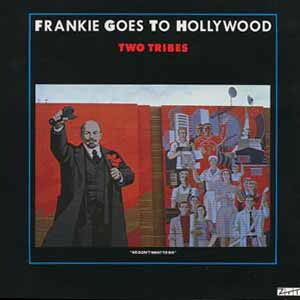“Two Tribes” is a song by British band Frankie Goes to Hollywood, released in June 1984 with “One February Friday” on the B-side. The song was later included on their debut album Welcome to the Pleasuredome. It became one of the band’s biggest hits and a defining track of the 1980s.
“Two Tribes” is a high-energy synth-pop song with a strong dance beat, combining elements of electronic music, funk, and rock. The song features driving basslines, pulsating synthesizers, and a distinctive orchestral arrangement, including dramatic string sections and booming percussion. Its powerful production was handled by Trevor Horn, whose work contributed to the song’s cinematic and intense feel.
The song addresses the Cold War tensions between the United States and the Soviet Union, symbolizing the “two tribes” locked in conflict. The lyrics, though somewhat abstract, convey the fear of nuclear war and the destructive potential of political power struggles. The recurring theme of war and peace runs through the song, with lines like “when two tribes go to war, a point is all that you can score” emphasizing the futility of violence.
“Two Tribes” was a massive commercial success. It reached No. 1 on the UK Singles Chart, where it stayed for nine consecutive weeks, becoming one of the longest-running No. 1s of the decade.The song also topped the charts in several other countries, including Germany, and New Zealand. In the United States, it peaked at No. 3 on Billboard Dance Club Songs chart.
The Godley & Creme-directed music video for “Two Tribes” was highly controversial and memorable. It featured actors portraying U.S. President Ronald Reagan and Soviet leader Konstantin Chernenko engaging in a brutal wrestling match, symbolizing the Cold War conflict. The video’s dark humor and political satire reflected the anxieties of the time and helped the song gain even more attention.
“Two Tribes” remains one of the most iconic songs of the 1980s and is remembered for its bold political message, powerful production, and chart dominance. The song’s fusion of pop, electronic music, and orchestral elements, along with its commentary on Cold War tensions, made it both a dance anthem and a politically charged statement.

